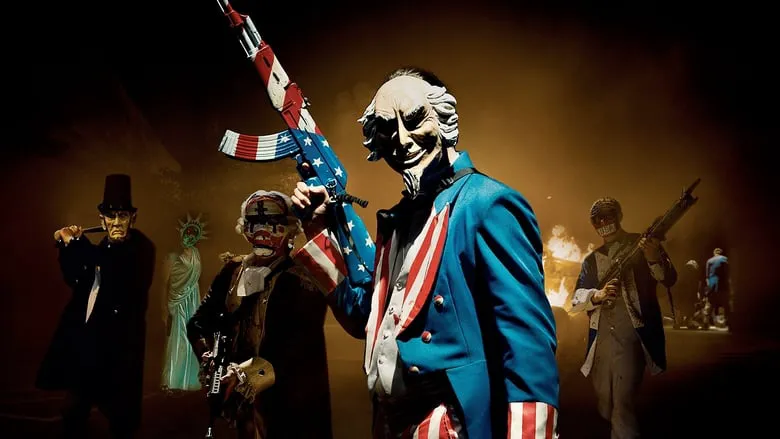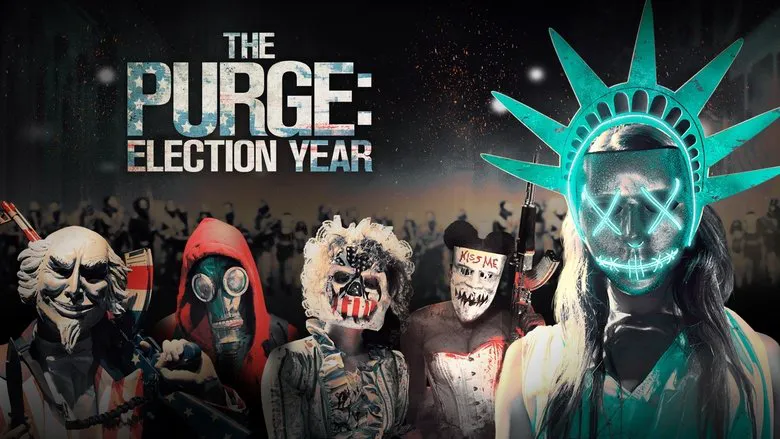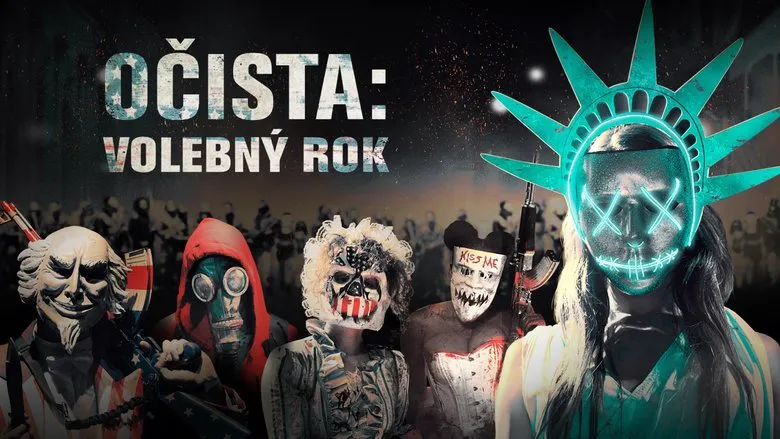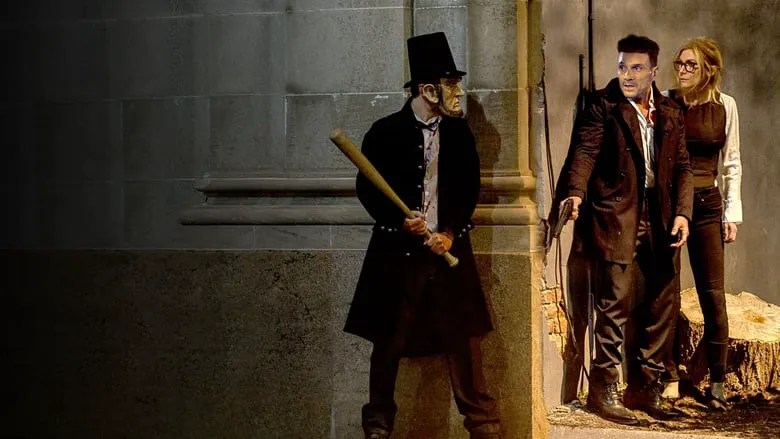The Purge: Election Year - A Missed Opportunity
The third installment in the renowned horror-fantasy series, “The Purge,” sacrifices the very elements that made it a hit for the sake of a simplistic political message.
For a quarter of a century, America has observed the Purge – an annual night where almost any crime, including rape and murder, is legalized. Eighteen years prior, Charlie Roan (Elizabeth Mitchell) lost her entire family to this event. Now a Senator, she’s running for President, vowing to abolish this nightmarish tradition. With a high chance of winning, the ruling “New Founding Fathers of America” (NFFA) send mercenaries to assassinate her during the Purge. Almost all of Charlie’s close aides are killed or betray her, but Leo Barnes (Frank Grillo), her bodyguard, manages to save her and hide her in a store protected by its owner, Joe (Mykelti Williamson), and his friends. Meanwhile, Dante Bishop (Edwin Hodge), the leader of the “anti-Purge” Resistance, plans an attack on the church where the ruling elite are sheltering for the night.

The film is set in Washington, D.C., but was filmed in Woonsocket, Rhode Island.
The Problem with Scaling Horror
Most horror plots don’t scale well. If you’ve made a successful film about a malevolent ghost or a serial killer and earned a fortune, the sequel will likely be very similar. There’s simply nowhere to spend the increased budget, except perhaps on more famous actors and more convincing special effects.

Initially, the film was supposed to be a prequel to the previous two films, but the director decided to make a sequel when Frank Grillo agreed to return to the series.
“The Purge” was an exception. The 2013 film by experienced screenwriter and novice director James DeMonaco was a modest production with a budget of $3 million, but it depicted a small slice of what was happening across America. So, when the film became a hit, DeMonaco was able to conceive and direct a much more expansive sequel, “The Purge: Anarchy,” which critics considered stronger than the first. Unfortunately, DeMonaco failed to repeat this trick in “The Purge: Election Year.”

Losing the Essence of the Purge
It’s hard to believe, but just three years after filming the first movie, the director completely forgot the main “hook” of his series. As easily determined from the first two films, it lies in the fact that the Purge reveals the true essence of people, invisible in broad daylight. A best friend stabs you in the back, while a shady stranger risks their life for you. Therefore, during the Purge, you can’t trust anyone, but you might be pleasantly surprised. Clearly, stories on this theme “work” best when the frame features ordinary people on the edge of good and evil, who can go to one extreme or the other at any moment.

In “The Purge: Election Year,” however, there are almost no such characters. The main characters are divided into demons and saints even before the start of the action, and throughout the film, none of them give any reason to doubt their moral character. The villains are primarily the New Founding Fathers and their henchmen and mercenaries (the latter adorned with Nazi tattoos to ensure no one suspects them of humanity), while Charlie, Leo, Joe, Dante, and their friends and allies act as the saints. This is no longer a provocative psychological horror about the unpredictability of people freed from external constraints, but a flat political pamphlet that makes “The Hunger Games” seem like “War and Peace.”

A Simplistic Political Message
Of course, political pamphlets also have a place in pop culture. But the message of “The Purge: Election Year” – that the elite maintain power while the lower classes kill each other – can be conveyed in a few minutes, and the film has nothing more to say to the audience. Tellingly, Charlie turns out to be not a wise and resourceful leader, but a dull “organ,” uttering stale platitudes like, “If you kill him, you’ll become just like him!” and doing virtually nothing throughout the film. She’s not an alternative to the fanatical New Founding Fathers, but a blonde placeholder-mannequin where someone like President Whitmore from “Independence Day” should have been.
Lackluster Action and Dialogue
Perhaps “The Purge: Election Year” compensates for its ideological simplicity with an exciting plot and powerful action? No, the film’s action is predictable and devoid of surprises, and there are surprisingly few fight scenes. There’s a bit at the beginning, a little more at the very end, but mostly “The Purge: Election Year” is a talky production with terribly written dialogue. The action scenes are conceived in the same way – none of them are memorable. Gunfights are just gunfights.
Finally, the actors don’t save the film either, as only the “mannequin” Elizabeth Mitchell and Mykelti Williamson, whose role is much brighter, can boast star charisma, but still not interesting enough for Williamson to pull the film off alone. Moreover, Frank Grillo, who was the central character of “The Purge: Anarchy” and who serves as the formal protagonist of the third film, is lost against the background of this colorful actor. So, it’s not certain that the film benefited from Williamson’s invitation. Although without him, it would probably have been even worse.